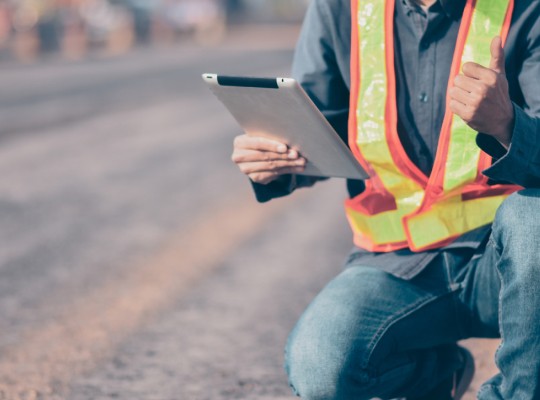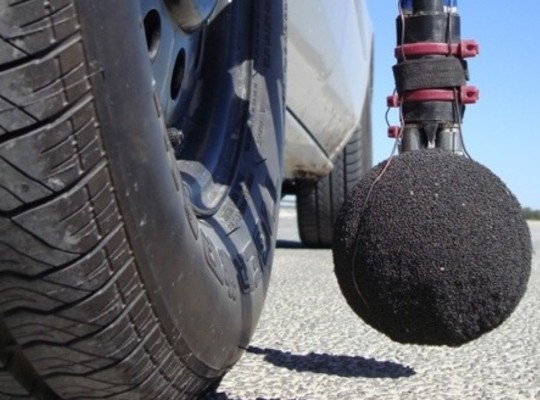TESTING
Traffic noise can be a major environmental concern for many roads and highways.
Traffic noise can be a major environmental concern for many roads and highways. In many cases, the dominant source of traffic noise is tire-pavement noise, that is, sound produced by the tires rolling on the pavement. Sound walls or barriers are a common method of reducing traffic noise.
However, from research and experience, it is possible to build pavements that are quieter rather than noisier. Quieter pavements can be a lower cost alternative, or a supplement, to traditional noise abatement strategies.
There are dozens of ways to make quiet pavements, but only a few will meet your needs. We will help you decipher which methods are best suited to you.
Because Transtec combines noise control experts with pavement experts, we are uniquely qualified to provide cost-effective alternatives for designing quiet pavements. We have the experience and knowledge to help you balance the many variables such as cost, materials availability, construction time, performance demands, and others. We work with you to identify quiet pavement design options that best meet your project-level and network-level objectives.


Nearby residents are complaining about traffic noise – but the pavement is constructed the same as another road without complaints. Why?
Transtec experts understand highway construction materials, surface texture, tire-pavement noise, and how all these interact. We can review your design, materials, and conduct specialized surface texture measurements to understand the root cause of high noise levels from a pavement. Using state-of-the-art texture measuring methods and three-dimensional profiles, we can diagnose why a pavement surface texture is louder than expected
Which pavements in your region are quieter? Which are louder? Do your pavements get louder or quieter with age?
Answers to questions such as these are needed to formulate a quieter pavements strategy in your region.
Using the On-Board Sound Intensity (OBSI) test method, Transtec is capable of conducting tire-pavement noise measurements across a network of roads. The results create a database or catalog of pavement noise levels for the roads in your region. Such information allows you to identify quieter from louder construction methods.
For existing roads, it can help identify louder sections with higher risk of noise impact on roadside development. Results are visually presented in a Google Earth based tool which includes audio samples of the noise and photos of the pavement.

When you want an accurate measurement of tire-pavement noise level, we have the most reliable solution.
Transtec provides state-of-the-art tire-pavement noise measurement services worldwide. We provide a complete service package with quick turnaround time. Whether you want to measure one section, compare multiple sections, or evaluate an entire network, simply identify the location(s), and we will take care of everything else. We will collect the data, perform a full analysis, and deliver a comprehensive yet easy to understand report of the tire-pavement noise levels resulting from the selected pavement sections.
There are many test standards related to tire-pavement and vehicle noise.
Here are some common standards for which Transtec provides testing and engineering services.
Contact us if your specific standard does not appear in the list.
CONTACT US

The Transtec Group engineers the best pavements in the world. Have a pavement problem? Give us a call—we’re good listeners.
© 2025 | The Transtec Group, Inc. | Privacy Policy